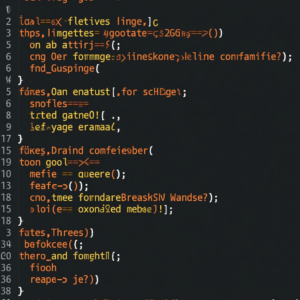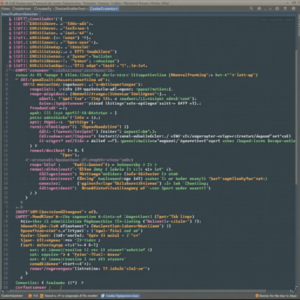
Introduction to Database Schema Design in CodeIgniter
Designing and optimizing database schemas is a crucial aspect of web application development, and CodeIgniter, a popular PHP framework, provides a robust set of tools to simplify this process. A well-designed database schema is essential for ensuring data consistency, reducing data redundancy, and improving the overall performance of the application. In this article, we will explore the best practices for designing and optimizing database schemas in CodeIgniter.CodeIgniter provides a flexible and modular architecture that allows developers to design and implement database schemas with ease. The framework supports a variety of database management systems, including MySQL, PostgreSQL, and MongoDB, among others. With CodeIgniter, developers can create robust and scalable database schemas that meet the requirements of complex web applications.
Understanding Database Schema Design Principles
Before designing a database schema in CodeIgniter, it’s essential to understand the fundamental principles of database schema design. A well-designed database schema should adhere to the following principles: normalization, denormalization, data consistency, and data integrity. Normalization involves organizing data into tables to minimize data redundancy and dependency. Denormalization, on the other hand, involves intentionally deviating from normalization rules to improve performance.Data consistency ensures that data is consistent across the database, while data integrity ensures that data is accurate and reliable. By following these principles, developers can design robust and scalable database schemas that support complex web applications. CodeIgniter provides a range of tools and features that simplify the database schema design process, including database migration, schema builder, and query builder.

Designing Database Schemas in CodeIgniter
CodeIgniter provides a simple and intuitive way to design database schemas using the Schema Builder class. The Schema Builder class allows developers to create and modify database tables, indexes, and relationships using a simple and expressive syntax. To design a database schema in CodeIgniter, developers need to create a new instance of the Schema Builder class and define the tables, fields, and relationships.For example, to create a new table called “users” with fields “id”, “name”, and “email”, developers can use the following code: $this->db->schema()->create_table(‘users’, [ ‘id’ => [ ‘type’ => ‘INT’, ‘constraint’ => 11, ‘unsigned’ => TRUE, ‘auto_increment’ => TRUE ], ‘name’ => [ ‘type’ => ‘VARCHAR’, ‘constraint’ => ‘255’ ], ’email’ => [ ‘type’ => ‘VARCHAR’, ‘constraint’ => ‘255’ ]]); This code creates a new table called “users” with the specified fields and relationships.
Optimizing Database Schemas in CodeIgniter
Optimizing database schemas is essential for improving the performance and scalability of web applications. CodeIgniter provides a range of tools and features that simplify the database schema optimization process, including query caching, database indexing, and query optimization. Query caching involves storing frequently executed queries in a cache to reduce the load on the database.Database indexing involves creating indexes on frequently accessed fields to improve query performance. Query optimization involves analyzing and optimizing queries to reduce the number of database calls and improve performance. CodeIgniter also provides a range of tools and features for monitoring and debugging database performance, including database profiling and query logging.
Best Practices for Database Schema Design in CodeIgniter
Follow best practices when designing and optimizing database schemas in CodeIgniter. Some of the best practices include using meaningful table and field names, avoiding redundant data, and using indexes and constraints to improve data integrity. Developers should also use the Schema Builder class to create and modify database tables, and use the Query Builder class to execute queries.Additionally, developers should use query caching and database indexing to improve performance, and use database profiling and query logging to monitor and debug database performance. By following these best practices, developers can design and optimize robust and scalable database schemas that support complex web applications.
Conclusion
In conclusion, designing and optimizing database schemas is a crucial aspect of web application development, and CodeIgniter provides a robust set of tools to simplify this process. By understanding database schema design principles, using the Schema Builder class, and following best practices, developers can create robust and scalable database schemas that support complex web applications.CodeIgniter’s flexible and modular architecture, combined with its range of tools and features, makes it an ideal choice for web application development. Whether you’re building a simple blog or a complex e-commerce platform, CodeIgniter provides the tools and features you need to design and optimize robust and scalable database schemas.

